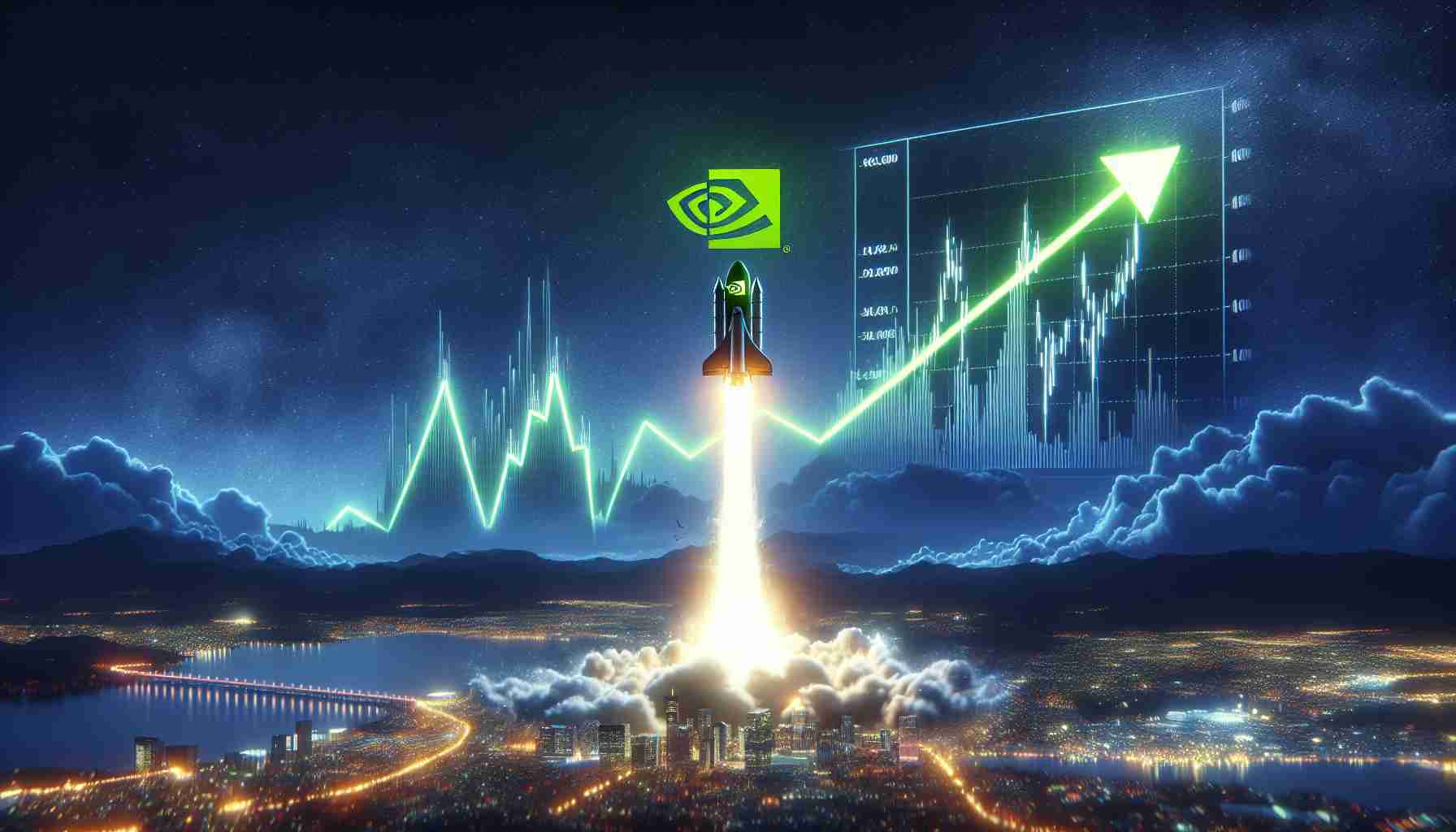Nvidia’s Market Capitalization Skyrockets
Nvidia, a giant in the tech industry, has been on an impressive financial ascent lately, with its value skyrocketing beyond $1 trillion, an increase that has positioned the company among the top competitors in the market. The remarkable rally comes after a 239% stock price surge in 2023, outperforming every other company in the S&P 500. In a dramatic shift, Nvidia now finds itself with a market capitalization potentially surpassing those of industry stalwarts like Microsoft and Apple, laying the groundwork to become the world’s most valuable company before the year concludes.
Reasons Behind Nvidia’s Spectacular Growth
Despite the steep upward trend in Nvidia’s stock price, which may suggest an inflated value, the company’s growth can be attributed to solid financial achievements and strategic market positioning. Nvidia’s financial statements reveal a steep hockey stick curve in both sales and net income, with the company transforming roughly $0.50 of every sales dollar directly into net income—a testament to its profitability.
Further enhancing its financial prowess, Nvidia boasts operating margins that eclipse those of the “Magnificent Seven,” an elite cluster of dominant tech companies. Additionally, Nvidia’s balance sheet reflects a healthy net cash position, further solidifying its financial stability and investment appeal.
Redefining Markets with Pervasive Computing Power
Nvidia’s evolution from a GPU manufacturer primarily serving the gaming and personal computing sectors to a linchpin in artificial intelligence demonstrates its agile response to market demands. A tremendous revenue contributor, Nvidia’s compute and networking segment now reflects a paradigm shift in its business model. The company’s GPUs have not only found new life in crypto mining and advanced automotive applications but have become indispensable for powering AI—a sector with seemingly inexhaustible growth potential.
Challenges on the Horizon
Despite Nvidia’s current stronghold, investors must reflect on several challenges. Market share is always at risk due to competitive pressures, and the rate of AI adoption could stagnate, potentially curbing Nvidia’s sales momentum. Moreover, the inherent cyclicality of the semiconductor industry presents risks of fluctuating demand, which could lead to volatility in earnings and investor sentiment. These factors must be weighed carefully against the strong fundamentals supporting Nvidia’s current market rally.
International Presence and Collaboration Challenges
Nvidia operates on a global scale, which brings a diverse range of regulatory environments and potential geopolitical tensions that could affect supply chains and trade relationships. As Nvidia expands, it may face increased scrutiny from international regulators, especially as it tries to acquire other companies to fuel its growth, like the attempted acquisition of Arm Ltd., which faced regulatory hurdles.
Diversification Advantages
One advantage of Nvidia’s business is its diversification across different market segments. Nvidia not only produces GPUs for gaming but also for professional visualization, data centers, and automotive applications. This diversification allows Nvidia to hedge against downturns in any single market segment.
Ethical and Social Implications
Nvidia’s technology in AI raises ethical questions about job displacement and the potential misuse of AI for surveillance or autonomous weaponry. As AI becomes more pervasive, Nvidia, like other tech leaders, may face increasing public scrutiny over how its products are used.
Environmental Concerns
The demand for computing power comes with an environmental impact due to the energy requirements of data centers. As a leader in the supply of data center technology, Nvidia’s growth is tied to an industry that is grappling with how to reduce its carbon footprint.
Intellectual Property Risks
Intellectual property (IP) is a cornerstone of Nvidia’s success. The risk of IP theft or patent litigation is an ongoing challenge for any tech company, especially given the competitive nature of the semiconductor industry.
Research and Development (R&D) Expenditures
Continuous innovation is key to Nvidia’s success, yet it comes at a cost. The company must sustain high levels of R&D spending to maintain its competitive edge. This spending could affect profitability if not managed effectively in correlation with revenue growth.
For further information about Nvidia and its role in the tech industry, visit their official website at Nvidia. Ensure that the URL is correct and the link is from a reliable source before visiting.
The source of the article is from the blog maestropasta.cz
